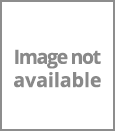Speak directly to the analyst to clarify any post sales queries you may have.
The overactive bladder treatment market is at a pivotal stage, defined by advancing therapies, evolving patient needs, and changing regulations. Senior decision-makers must navigate this landscape with insight to ensure sustained leadership and effective market strategies.
Market Snapshot: Overactive Bladder Treatment Market
The overactive bladder treatment market recorded growth from USD 4.71 billion in 2024 to USD 4.89 billion in 2025, with a projected CAGR of 3.86%, set to reach USD 6.38 billion by 2032. This progression is underpinned by several factors: aging demographics, widespread clinical awareness, and ongoing innovation in therapeutic solutions. Enhanced therapies are driving improved outcomes and broadening access to advanced interventions across multiple geographies, supporting both established and emerging healthcare infrastructures.
Scope & Segmentation
This in-depth report delivers a segmented analysis of the overactive bladder treatment market, allowing stakeholders to pinpoint actionable opportunities and refine strategies for optimal resource allocation. The segmentation provides clarity on product evolution, clinical pathways, and market access considerations across regions and user groups:
- Product Type: Anticholinergics, Beta-3 Agonists, Botulinum Toxin, Neuromodulation Devices—detailing both extended and immediate release formulations, varying device types, and drug-specific classes.
- Therapeutic Class: Non Pharmacological (Behavioral Therapy, Neuromodulation, Pelvic Floor Muscle Training) and Pharmacological protocols, catering to different patient presentations and care settings.
- Route Of Administration: Injectable, Intravesical, Oral, and Transcutaneous options, supporting versatile deployment in specialist or remote care environments.
- Distribution Channel: Hospital Pharmacy, Online Pharmacy, and Retail Pharmacy, each addressing distinct purchasing preferences and supply chain requirements.
- End User: Encompassing Clinic, Home Care, and Hospital, reflecting the shift towards patient-centric and decentralized care models.
- Age Group: Adult, Geriatric, Pediatric, with tailored approaches for age-dependent therapy needs.
- Gender: Female and Male, driving consideration for gender-specific protocols and outcomes.
- Regional Analysis: Markets covered include the Americas (United States, Canada, Mexico, Brazil, Argentina, Chile, Colombia, Peru), Europe, Middle East & Africa (United Kingdom, Germany, France, Russia, Italy, Spain, Netherlands, Sweden, Poland, Switzerland, United Arab Emirates, Saudi Arabia, Qatar, Turkey, Israel, South Africa, Nigeria, Egypt, Kenya), and Asia-Pacific (China, India, Japan, Australia, South Korea, Indonesia, Thailand, Malaysia, Singapore, Taiwan), ensuring a comprehensive global perspective.
- Company Developments: Strategic updates are provided for Astellas Pharma Inc., Pfizer Inc., AbbVie Inc., Ferring B.V., Medtronic plc, Teva Pharmaceutical Industries Ltd., Axonics Modulation Technologies, Inc., Viatris Inc., Sandoz International GmbH, and Eisai Co., Ltd.
Technology & Segment Insights
Neuromodulation technologies and digital health tools are seeing accelerated integration, benefiting specialist clinical environments and home care models alike. Non-pharmacological approaches complement standard pharmacological regimens, paving the way for more adaptable, patient-specific interventions. Distinct differences in channel adoption by region, such as the rise of online and hospital pharmacy models, are influencing distribution and access strategies for broader patient and caregiver segments.
Key Takeaways: Strategic Implications
- Expanding therapy portfolios enable tailored management across both longstanding and newly diagnosed patient groups, supporting diverse clinical pathways.
- Advanced device-based and digital solutions create operational and supply chain demands that require coordinated planning across the value chain.
- Flexible dosing and non-pharmacological intervention models are gaining traction for ongoing, multi-generational care requirements.
- Payer engagement is strengthened by partnerships, real-world data, and competitive offerings, supporting differentiation in procurement environments.
- Efforts toward equitable care and regionally adapted patient pathways encourage the adoption of customizable solutions, addressing complex healthcare system nuances.
Tariff Impact: Regulatory and Supply Chain Adaptation
The introduction of U.S. tariffs in 2025 is prompting recognizable shifts in operational approaches. Organizations are increasing domestic manufacturing reliance, renegotiating international supplier agreements, and adopting modular product designs to mitigate tariff-related risk. These strategic adaptations, including streamlined logistics and revised sourcing models, support continued therapeutic access and resilience across multinational supply chains.
Methodology & Data Sources
This report employs a hybrid methodology combining secondary research with direct interviews from clinicians, payers, and procurement specialists across key regions. Scenario-based quantitative modeling validates trends and ensures action-oriented conclusions for decision-makers.
Why This Report Matters: Action-Oriented Market Insights
- Enables executives to respond proactively to evolving clinical, regulatory, and patient landscape changes in every major region.
- Supports fast adaptation to changes in reimbursement, compliance, and access barriers, underpinning robust competitive strategies.
- Facilitates resilient supply chain and sourcing plans, ensuring business continuity in dynamic operating environments.
Conclusion
Strategic responsiveness is vital as the overactive bladder treatment market navigates ongoing clinical and regulatory changes. Data-driven approaches and collaboration will be key to long-term sector leadership.
Additional Product Information:
- Purchase of this report includes 1 year online access with quarterly updates.
- This report can be updated on request. Please contact our Customer Experience team using the Ask a Question widget on our website.
Table of Contents
3. Executive Summary
4. Market Overview
7. Cumulative Impact of Artificial Intelligence 2025
List of Figures
Table Information
| Report Attribute | Details |
|---|---|
| No. of Pages | 197 |
| Published | October 2025 |
| Forecast Period | 2025 - 2032 |
| Estimated Market Value ( USD | $ 4.89 Billion |
| Forecasted Market Value ( USD | $ 6.38 Billion |
| Compound Annual Growth Rate | 3.8% |
| Regions Covered | Global |
| No. of Companies Mentioned | 11 |








